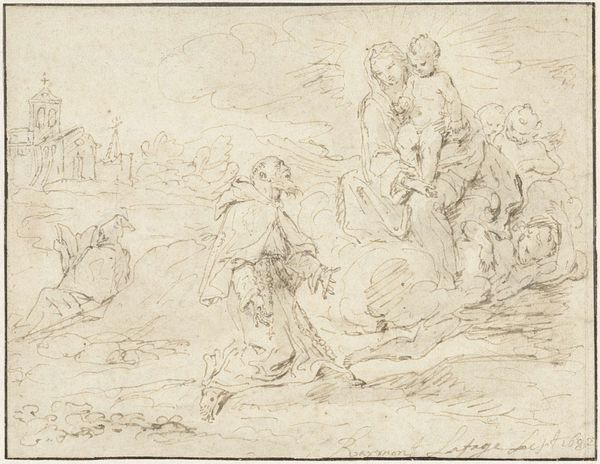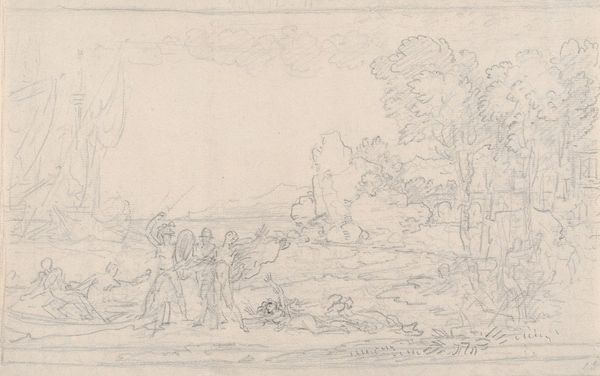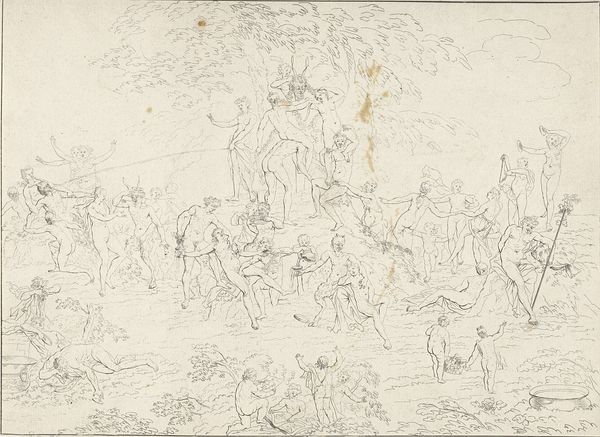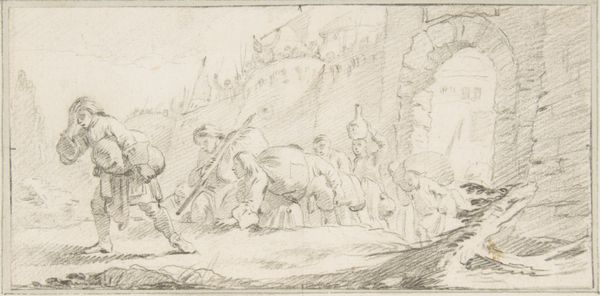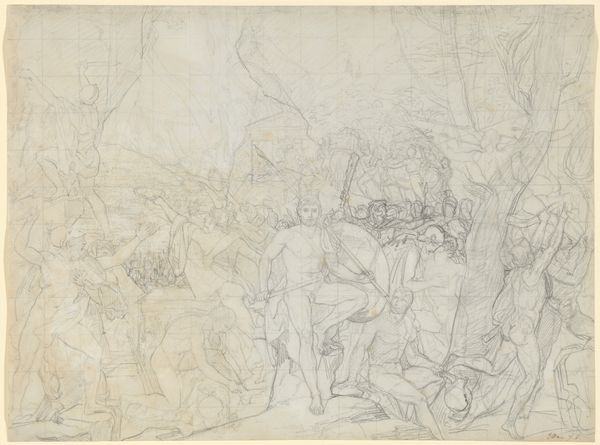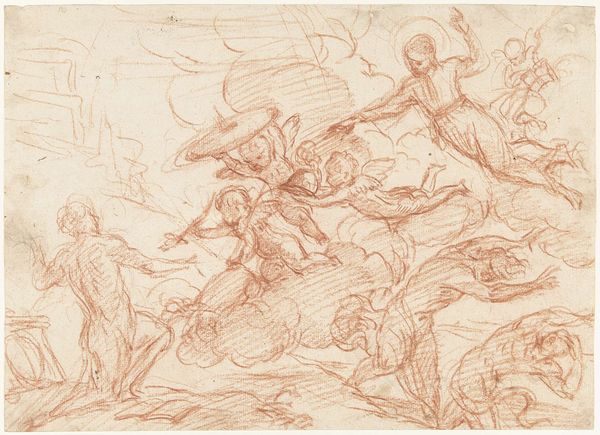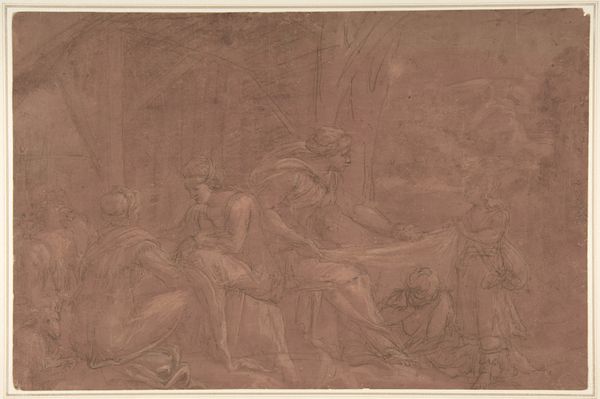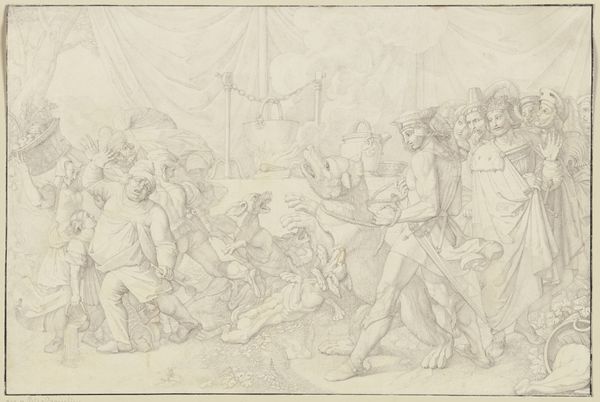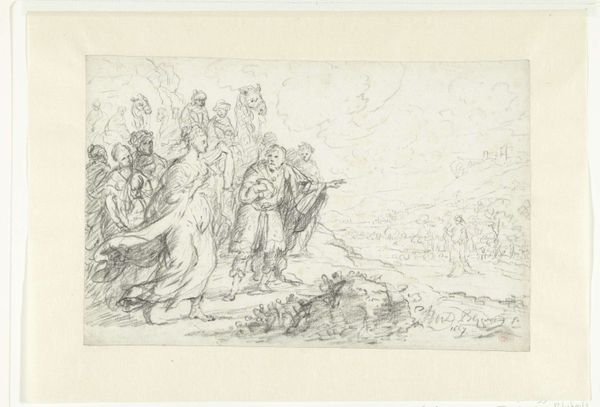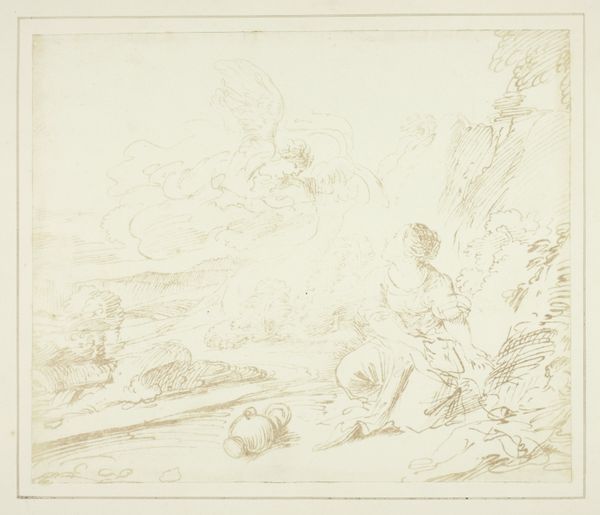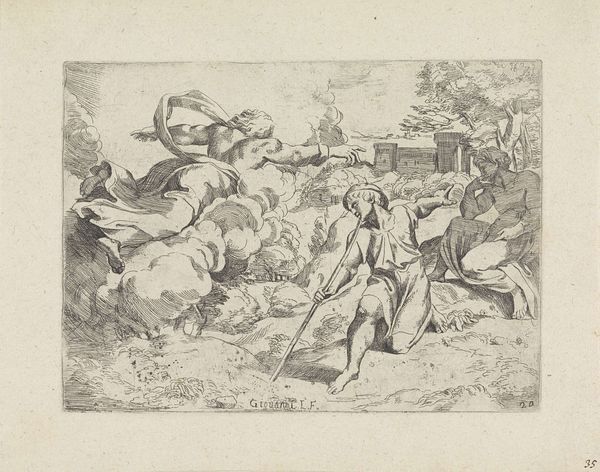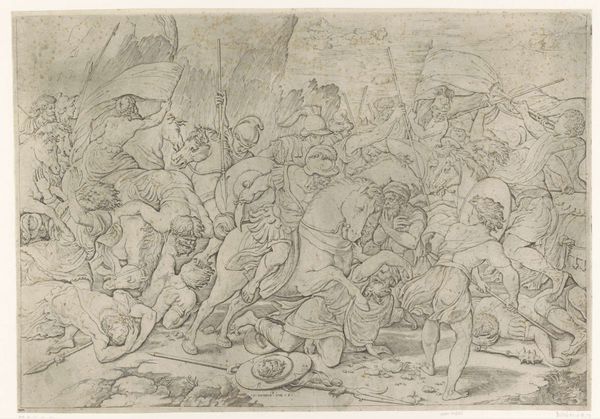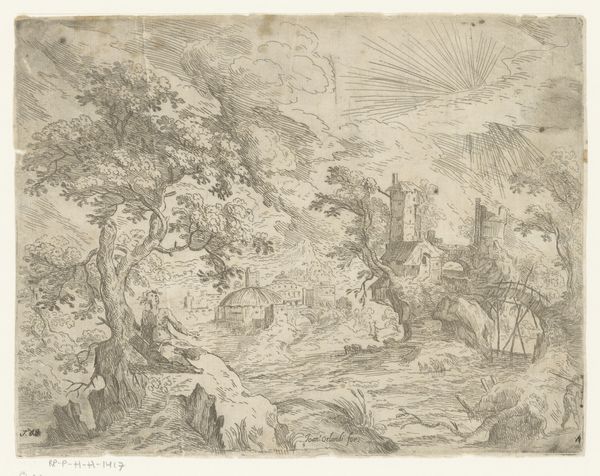
Io in de gedaante van een koe bij haar vader Inachus en haar zusters 1702 - 1768
0:00
0:00
drawing, pencil
#
drawing
#
baroque
#
pencil sketch
#
landscape
#
figuration
#
pencil
#
history-painting
Dimensions: height 228 mm, width 336 mm
Copyright: Rijks Museum: Open Domain
Curator: This pencil sketch by Jean Restout, created sometime between 1702 and 1768, depicts “Io in de gedaante van een koe bij haar vader Inachus en haar zusters,” or Io, in the guise of a cow, with her father Inachus and her sisters. Editor: Immediately, the composition feels classical, doesn't it? Almost theatrical in its arrangement, with a somber mood underscored by the muted palette. Curator: Yes, absolutely. The carefully rendered figures create a strong sense of depth, emphasized by the receding landscape in the background. You can see the faint grid lines too, perhaps evidence of a compositional guide for the artist. The artist's focus is clearly on form. Look how the shading brings out the sculptural qualities of the bodies. Editor: And the story. Poor Io, turned into a heifer to hide her from Hera's jealous rage! It speaks volumes about patriarchal power, doesn't it? Her sisters cluster around, perhaps unaware of her true identity, trapped in this bestial form as Zeus's conquest. It makes one think about the constant objectification and corporeal control throughout art history. Curator: While I appreciate your reading, the technical skill is quite remarkable. Restout captures light and shadow so subtly, almost imperceptibly suggesting volume. Note the dynamic tension created through contrasting diagonal lines across the pictorial space. Editor: Yet, consider how this mythology reflects societal attitudes. A woman's identity erased, subjugated—isn’t that also about visual exploitation? It forces us to reflect: how does this image perpetuate or subvert the power dynamics embedded within the myth? Curator: Certainly, considering narrative and form in concert is crucial. However, to get lost purely in socio-political arguments can distract from the elegance of its baroque style. Editor: Maybe that’s where its strength truly lies. Restout's drawing allows a continued engagement with both the aesthetic and ethical issues that still resonate so forcefully today. The way light illuminates the suffering and hidden truths of the women portrayed opens possibilities for contemporary conversation.
Comments
No comments
Be the first to comment and join the conversation on the ultimate creative platform.
